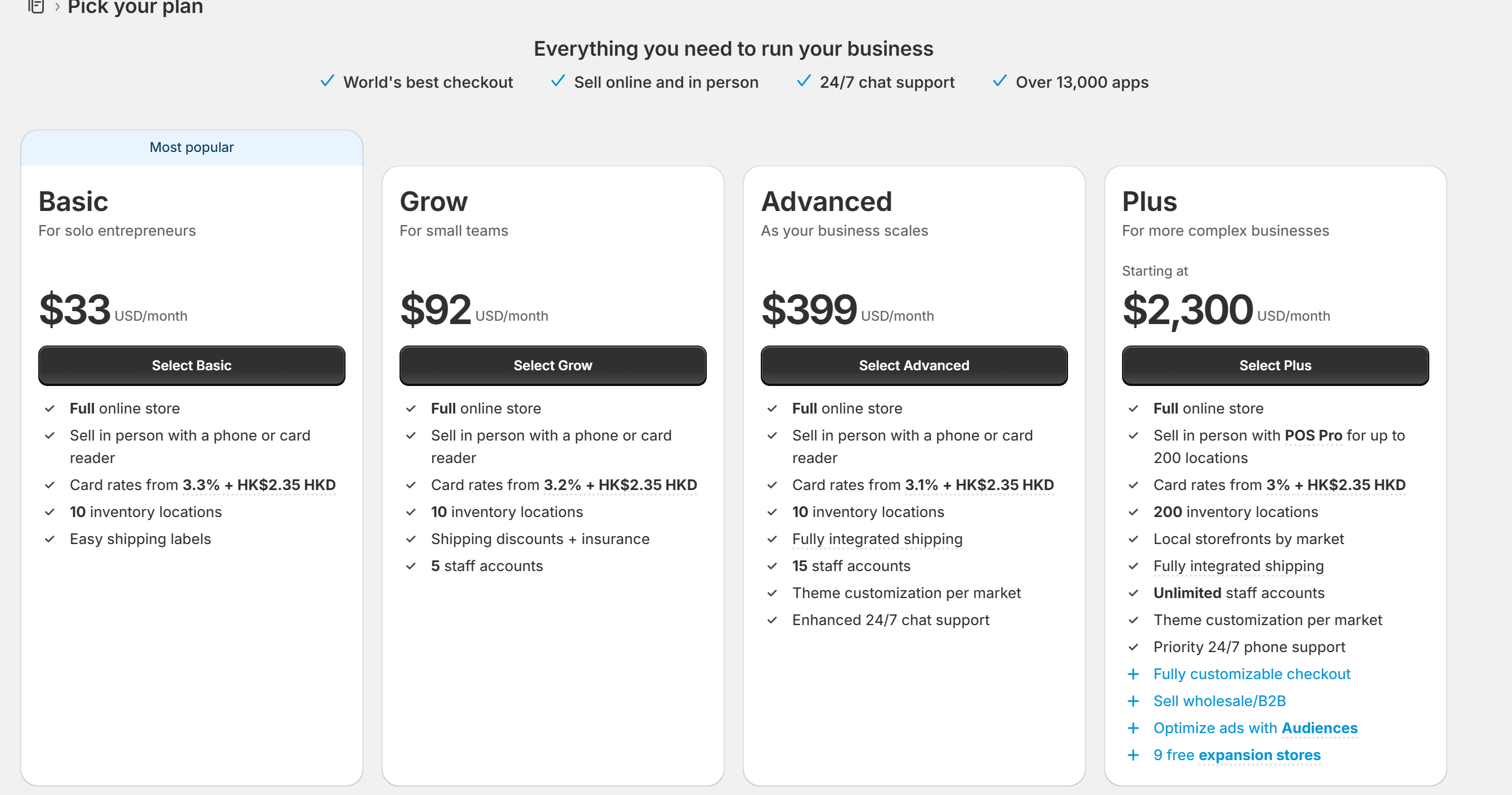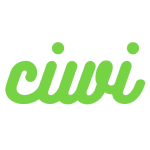If you’re planning to launch your online store with Shopify in 2025, one of the very first questions you’ll ask is: How much does Shopify cost?This guide provides a complete breakdown of Shopify plans, Shopify pricing, and Shopify costs, helping you choose the most cost-effective subscription based on your business size and expected revenue.
What Costs Should You Expect with Shopify?
No matter which plan you choose, Shopify sellers should be aware of the different cost channels involved. Here are the main Shopify costs you need to consider:
- Domain fees – You need a domain name to launch your store. Paid annually or periodically.
- Plan subscription fees – The monthly or yearly cost of your chosen Shopify plan.
- Platform transaction fees – Fees charged by Shopify itself.
- Third-party transaction fees – Additional fees if you use payment gateways like PayPal or Stripe instead of Shopify Payments.
- Currency conversion fees – When orders are settled in multiple currencies.
- App/plugin fees – Costs from Shopify’s app marketplace, depending on the features you add.
- Theme/template fees – One-time purchase cost for store design.
👉 Among all these, the two biggest cost drivers are subscription fees and transaction fees.
Shopify Plans Overview
Shopify currently offers seven plans:
- Four standard plans: Basic, Shopify, Advanced, Plus
- Three additional plans: Starter, Retail, Enterprise Commerce
Except for Shopify Plus, all plans offer a $1 trial for the first three months. Plans can be paid monthly or annually.

Shopify Pricing Breakdown
Here’s a quick look at the Shopify pricing structure in 2025:
| Plan | Monthly Price | Annual Price | Staff Accounts | Transaction Fees (Third-party) |
| Basic | $39/mo | $29/mo | None | 2% |
| Shopify | $105/mo | $79/mo | 5 | 1% |
| Advanced | $399/mo | $299/mo | 15 | 0.60% |
| Plus | From $2,300/mo | – | Unlimited | 0.20% |
💡 Note: Shopify Plus offers the most competitive rates and enterprise-grade features.
What Are the Key Differences Between Shopify Plans?
At first glance, most Shopify plans provide similar core features:
- Full online store functionality
- Unlimited products
- 24/7 customer support
- Marketing automation tools
- Fraud analysis and secure checkout
So what really separates the plans?👉 The key differentiator is transaction fees.
Shopify Transaction Fees
If you use Shopify Payments, your transaction fees are reduced. But many international sellers—especially in China—rely on third-party payment providers like PayPal. That’s why third-party transaction fees are crucial to consider.
- Basic: 2%
- Shopify: 1%
- Advanced: 0.6%
- Plus: 0.2%
The higher your sales, the more money you save with lower transaction fees.
Shopify Cost Calculator
Here’s a simple way to estimate your fixed Shopify cost each month:
- Basic: $29 + 2% of sales
- Shopify: $49 + 1% of sales
- Advanced: $299 + 0.6% of sales
- Plus: $2,300 + 0.2% of sales
Which Shopify Plan Should You Choose?
It mainly depends on your monthly sales volume:
- Under $3,000 → Shopify Basic
- $3,000 – $60,000 → Shopify
- $60,000 – $500,000 → Shopify Advanced
- Over $500,000 → Shopify Plus
Real Example: Shopify Cost for a Chinese Seller
Let’s assume a Chinese seller uses:
- Shopify Basic ($29/mo)
- PayPal Mainland business account (4.4% + $0.30 fee)
- No Shopify Payments
👉 Selling a $1,000 product:
- PayPal fee: $1,000 – ($1,000 × 4.4% + $0.30) = $955.70
- Shopify fee (2%): $20
- Final payout: $935.70
That’s before currency conversion fees.
Final Thoughts on Shopify Pricing
Choosing the right plan is essential for controlling your Shopify cost. While Shopify’s subscription fees may seem straightforward, transaction fees—especially third-party transaction fees—can significantly impact your profits.💡 Our tip: Always align your Shopify plan with your expected sales volume. This ensures you’re not overpaying for subscription costs, while also keeping transaction fees at a manageable level.If you’re starting out, Shopify Basic is enough. As your sales grow, upgrading to Shopify Advanced or even Shopify Plus will save you more in the long run.


